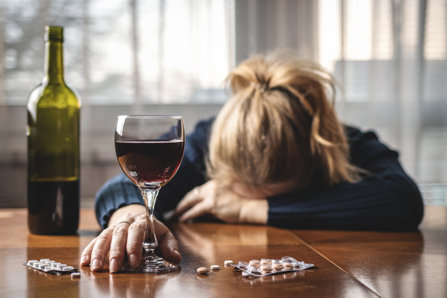New Study Shows Conservative Opioid Prescribing More Safe for Patients in the Long Run

The opioid addiction epidemic has touched off a complex debate over how best to control risk factors for patients with legitimate pain conditions who need access to pain relief. Thankfully, new research suggests physicians can adopt conservative opioid prescribing practices to reduce addiction risk without elevating other patient risk levels.
The Rapid Increase, Peak, and Decline of Mass Opioid Prescribing in America
During the late-1990s, 2000s, and early-2010s, U.S. doctors responded to pressure from pharmaceutical manufacturers to increase opioid painkiller prescribing. At its peak in 2012, doctors were writing about 255 million prescriptions for opioids annually, a rate of 81.3 prescriptions for every 100 U.S. residents.
It is now broadly understood that the pressure from pharmaceutical manufacturers on doctors to increase prescribing and the resulting (and sudden) increase in the number of Americans taking opioid painkillers during the early-2000s played a role in the onset of America’s opioid addiction epidemic. Beginning in the mid-2010s, doctors began reducing their prescribing rates, exerting more caution over who received opioid painkillers and who did not.
By 2020, opioid prescribing in the U.S. had mostly returned to pre-spike levels (43.3 prescriptions per 100 U.S. residents, or 142 million prescriptions per year). However, counties in the U.S. are still experiencing record-high prescribing. For example, in 3.6% of counties, enough opioid prescriptions are written for every county resident to have one. Some counties have as much as nine times the national average prescribing rate, counties that are effectively inundated with potentially dangerous prescription drugs.
Today, U.S. physicians are more aware of the risks of prescribing opioids. As a result, patients are less likely to be put on painkiller drugs unless they have a dire, legitimate need for them. Even then, when patients are put on opioids, it’s usually for shorter periods and with less-potent doses. Finally, many opioid manufacturers who made the drugs and pushed their mass distribution have since faced civil and criminal litigation in every U.S. state.
Research Suggests Depression and Suicide Risk Decline When Physicians Draw Back on Opioid Prescribing

As physicians gradually drew back from high rates of opioid prescribing, some advocacy groups came forward expressing concern for chronic pain patients, saying that preventing access to opioids for chronic pain would spike depression and suicide rates. However, new research has suggested the opposite. It seems that, as prescription rates fell, so did suicide risk.
Researchers at Columbia University Irving Medical Center in New York City found that people who are prescribed opioids, particularly when prescribed them at high doses, are at increased risk of suicide and overdose. About four in ten suicide overdose deaths across the U.S. involve opioids, and patients who are prescribed high dosages of opioids are at double the overdose risk as patients who are prescribed low doses of the same drug.
The researchers kept their inquiry open-ended as they sought to determine what effect reducing (or increasing) opioid prescribing would have on the population. “On one hand, increasing opioid prescriptions might increase suicide risks by expanding access to medications that are potentially fatal when mixed with other drugs—such as benzodiazepines—or when taken in excess,” said Dr. Mark Olfson, professor of medicine and law at Columbia University and lead study author. “On the other hand, lowering the dose of opioids too quickly or preventing people with unbearable pain from receiving adequate pain control with opioids could lead them to become desperate and perhaps even suicidal,” he said. To get to the bottom of the inquiry, Olfson and the other experts in the research group examined U.S. federal government data collected between 2009 and 2017 on opioid-related deaths, overdoses, and suicides. That data was then cross-referenced with information tracking opioid prescription patterns across the U.S. and during the same period.
The findings were quite alarming. After dividing the U.S. into 900 geographic regions and examining opioid prescribing rates, suicide, overdose, and death rates in each of those regions, Olfson and his team found that regions with the greatest decline in opioid prescribing also had the greatest declines in suicide rates. While the findings did not prove a cause-and-effect relationship, they did suggest more conservative opioid prescribing may also have the effect of reducing patients’ risk for drug-related suicide and overdose.
Dr. Olfson and his team at Columbia University were not the only ones who saw the research as a direct indicator of why more conservative prescribing practices are good, especially when such practices involve potent, addictive, and potentially dangerous drugs like opioid painkillers. “Limiting opioid prescriptions in addition to the amount of opioid medications prescribed and drug takeback initiatives are helpful in terms of reducing the associated risks not only for suicidality but also for addiction, unintentional overdoses, and death,” said Pat Aussem, associate vice president of consumer clinical content development with the Partnership to End Addiction in New York City. Aussem also highlighted the need to improve strategies for pain management, particularly by utilizing non-opioid therapies (when possible) for patients.
Doctors Should Keep Opioid Painkillers as a Last Resort
According to the Centers for Disease Control and Prevention, more than 263,000 Americans died from overdoses involving prescription opioids between 1999 and 2020. Quoting the CDC’s report highlighting the connection between opioid prescribing and overdose deaths, “Since the 1990s, when the amount of opioids prescribed to patients began to grow, the number of overdoses and deaths from prescription opioids has also increased. Even as the amount of opioids prescribed and sold for pain has increased, the amount of pain that Americans report has not similarly changed.” It seems clear that when doctors began to cut back on prescribing opioids, it was to keep patients safe and prevent addiction from spreading both on the street and in patients with a legitimate need for pain relief.
“Since the 1990s, when the amount of opioids prescribed to patients began to grow, the number of overdoses and deaths from prescription opioids has also increased...”
Thankfully, the research highlighted in the above sections demonstrates that doctors can reduce prescribing while keeping patients safe and preventing depression and suicide risk. Looking to the future, physicians should continue to be conservative and cautious when prescribing opioids, and they should seek alternative, non-opioid treatments first, holding opioids back as a last resort and, even then, prescribing them only sparingly.
Sources Cited:
- CDC. “US Opioid Dispensing Rate Map.” Centers for Disease Control and Prevention, 2021. cdc.gov
- AJP. “Opioid Prescribing and Suicide Risk in the United States.” American Journal of Psychiatry, 2023. ajp.psychiatryonline.org
- US News. “Curbing Opioid Prescriptions Won’t Raise Suicide Rates: Study.” US News, 2023. usnews.com
- CDC. “Prescription Drug Overdoses.” Centers for Disease Control and Prevention, 2022. cdc.gov
- CDC. “CDC Clinical Practice Guideline for Prescribing Opioids for Pain — United States, 2022.” Centers for Disease Control and Prevention, 2022. cdc.gov


 ®
®